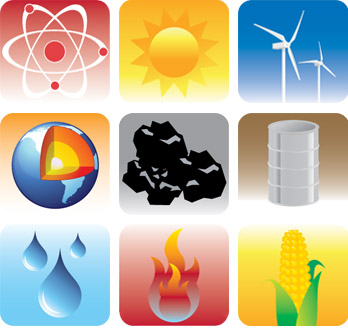Wednesday, 31/12/2025 | 08:09 GMT+7
2015 a series of events combined to drive what may well to be profound shifts—even turning points—in the history of the energy sector.

The ongoing decline in oil prices, which began as early as 2012, accelerated noticeably in 2015. The benchmark West Texas Intermediate oil price fell to $34.53 a barrel on December 18, lower than it’s been since before the financial crash of 2008, with no floor in sight. Goldman Sachs has predicted that oil could fall as low as $20 a barrel, a development that would cripple most oil-producing economies and have geopolitical ripple effects for years to come. At the same time, the price of natural gas remains near historic lows. Cheap oil and natural gas are conventionally thought to be negative influences on the adoption of renewable energy, lessening the incentives of businesses and consumers to give up fossil fuels. But that doesn’t seem to have slowed the shift away from fossil fuels in 2015.
Electricity generation from fossil fuels through the first nine months of 2015 barely climbed from the same period in 2014, while power from solar PV increased 48 percent. And oil consumption in the United States, the world’s largest oil market, is on a long-term downward trend: between now and 2040, according to the International Energy Agency’s World Energy Outlook, U.S. oil consumption will fall by nearly four million barrels per day, returning to the levels of the 1960s.
Indeed, the adoption of clean energy hit record rates in 2015. Analysts at GTM Research (one of the leading market analysis and advisory firms on the transformation of the global electricity industry) , in their report “The Future of U.S. Solar,” noted that total solar power installations to date in the United States reached 26 gigawatts at the end of 2015—and forecast that they’ll reach nearly 10 times that by 2030.
Clean energy progress in the U.S., though, is dwarfed by the ambitions of India and China. India alone intends to add 160 gigawatts of new renewable capacity by 2022, including 100 gigawatts of solar, which would represent by far the largest addition of new renewable power generation in history (see “India’s Energy Crisis”). The plans laid out in 2015 by India’s prime minister, Narendra Modi, and his minister of energy, Piyush Goyal, could mark a new path to development for poor countries that lack oil reserves. China and India both have huge ambitions for nuclear power as well. Beijing plans to build six to eight nuclear reactors a year through 2020, and by 2030, if its hopes materialize, should have the 110 reactors, the largest nuclear power fleet in the world.
The year also marked the first time in history that carbon emissions fell even as the world economy grew. U.S. coal consumption fell by 10.5 percent from 2013 to 2015, according to the U.S. Energy Information Administration, and while coal use in growing economies like India (now the fastest growing emitter of greenhouse gases) and China is expected to keep climbing for some years, the rate of growth is already slowing. Indeed, coal demand in China plateaued in 2015, indicating that the burning of coal by the world’s largest emitter of carbon dioxide could level off well before analysts expected it to.
The biggest signpost on the energy highway was the signing of the Paris accord on climate change. While the agreement failed to achieve what most climate activists hoped for—legally binding targets for emissions cuts, curbs on the production of fossil fuels, and a price on carbon—it nevertheless marked the first time that world leaders agreed to specific measures to reduce greenhouse gases and limit the rise of global temperatures. It was not the end of the fossil fuel era, but it may well have been the beginning of the end.
Hoa Nguyen (via Technologyreview.com)








 Webinar 2: “Financial Support for Energy Efficiency Enterprises – Opportunities and Challenges”
Webinar 2: “Financial Support for Energy Efficiency Enterprises – Opportunities and Challenges”
 Vietnamese enterprises achieve green growth and cut costs through energy efficiency
Vietnamese enterprises achieve green growth and cut costs through energy efficiency
 Capacity Building for Program Implementing Entity
Capacity Building for Program Implementing Entity
 Enhance Energy Efficiency Knowledge for Managers of Cement Industrial Enterprises
Enhance Energy Efficiency Knowledge for Managers of Cement Industrial Enterprises
 Capacity building for participating financial institutions in Ho Chi Minh City
Capacity building for participating financial institutions in Ho Chi Minh City
 Strengthening capacity for energy management officers of local government agencies
Strengthening capacity for energy management officers of local government agencies
 Steel Enterprises Saving Energy and Enhancing Competitiveness
Steel Enterprises Saving Energy and Enhancing Competitiveness